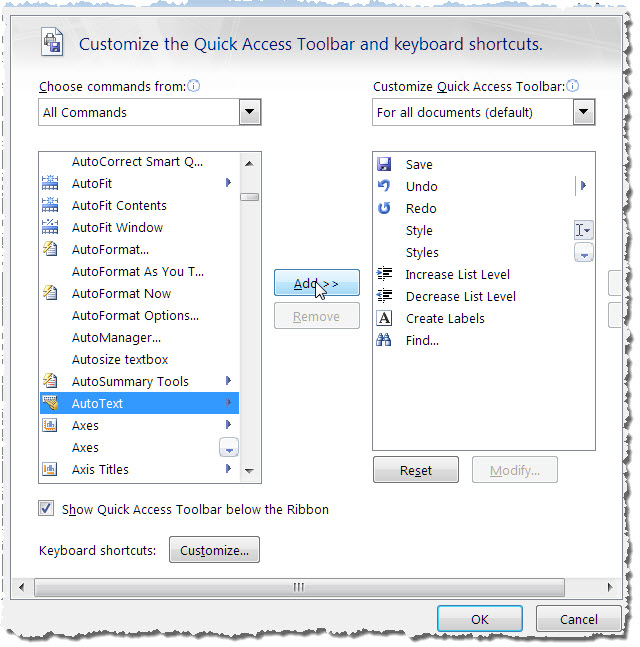

Many of these other apps don’t handle things like tables, since those require pasting in back-end formatting or code that you can’t necessarily just slap in, or can’t save in the database format the app uses. So what makes Quick Parts different?įor one thing, Quick Parts can handle formatting and tables within Outlook itself. Apps like AutoHotKey, TextExpander, Alfred, and others can all do similar things. If you’re reading this and you’re thinking “I can do that with X other app”, well, you’re maybe right. How Are Quick Parts Different from Other Options? So Outlook 2007, Outlook 2010, Outlook 2013, Outlook 2016, Outlook 2019, and Office 365 can all use them. Quick Parts is available in all versions of Outlook created after 2007, including 2007 itself. Any time you want a certain snippet of text, formatting, images, and other graphics to be readily available, Quick Parts is the way to do it. Of course, you can use them however you wish. A nicely formatted table is time-consuming to create but makes an email look more professional. Inserting a tablet with pre-configured information for, say, requesting or delivering support information.Storing common introduction or header information, including a business logo, a salutation, and an introduction sentence or two, so you don’t have to fetch images and type the same lines every time.


Storing your business Name, Address, and Phone Number (NAP information) so you can simply paste in a snippet instead of typing it over and over.There are a lot of different uses for Quick Parts, and the only limit is your creativity. They can be as long or as short as you want, and they can include text, images, tables, and even formatting. They’re something like a middle ground between a canned email and a text expander shortcut. Quick Parts are basically stored chunks of content. They’re very cool and can help a lot when composing emails, particularly when you’re composing basically the same thing day in and day out. What I’m talking about are Quick Parts, a feature Microsoft introduced in Outlook 2007 as an expansion of a previous feature, AutoText. This is one area where Outlook’s default configuration shines. Unfortunately, it’s not an option available out of the box for email programs like Thunderbird or platforms like Gmail, though you may be able to get plugins or extensions that mimic the functionality. I’m here today to talk about another option available to you, assuming you’re using Outlook. You can even use tools to voice your emails, under the assumption that you talk faster than you type. You can apply communication habits that minimize the amount of time you spend writing replies. You can set up filters and sorting to categorize and process emails before you need to give them your attention. There are a lot of different approaches to saving time with email. It’s so easy to get lost in your inbox and look up to find you’ve wasted three hours and haven’t gotten any of your real work done. If you’re one of the millions of people who use Outlook on a daily basis, you’re probably looking for any way you can to save time with your email.


 0 kommentar(er)
0 kommentar(er)
